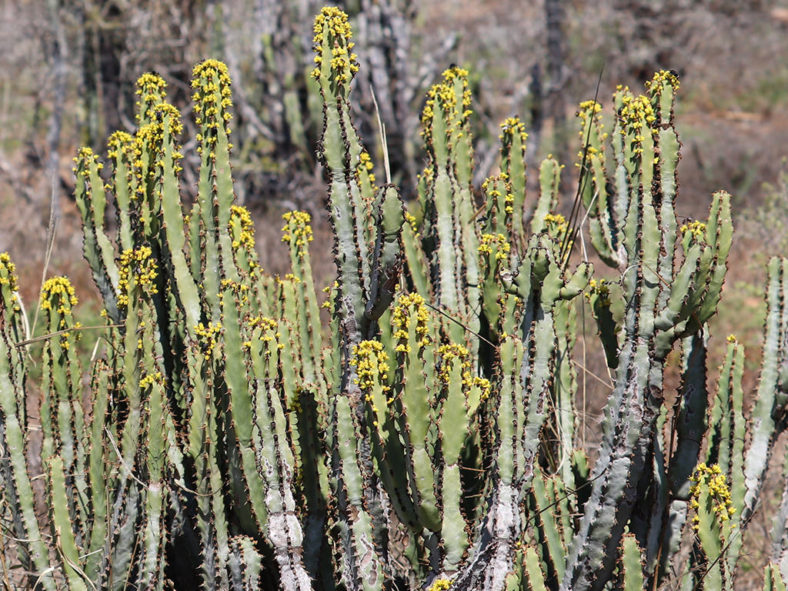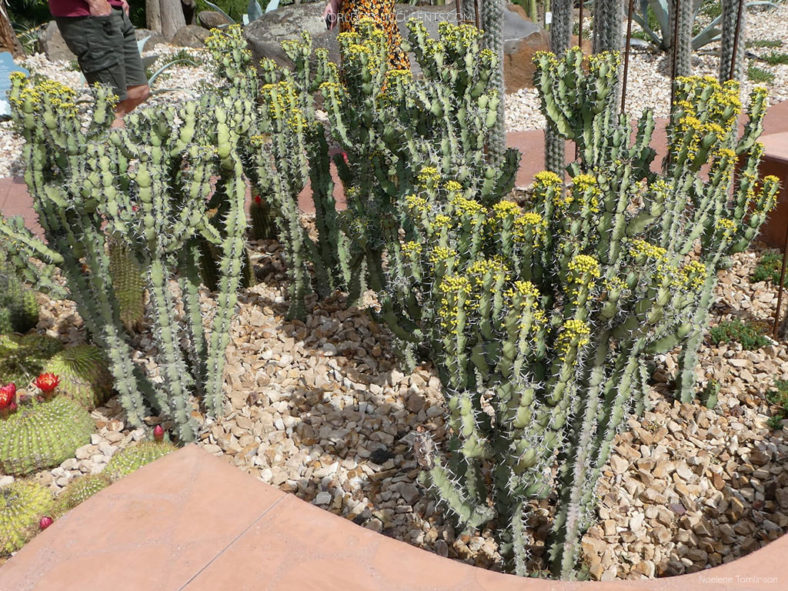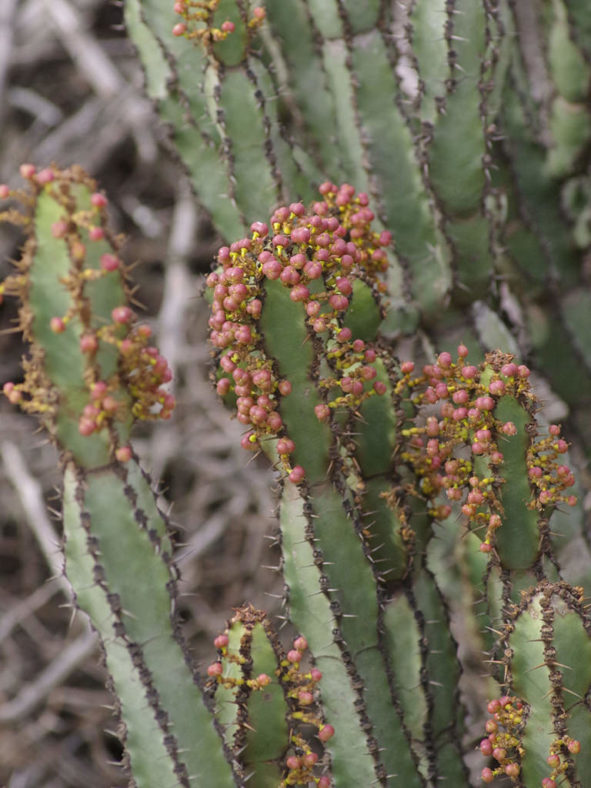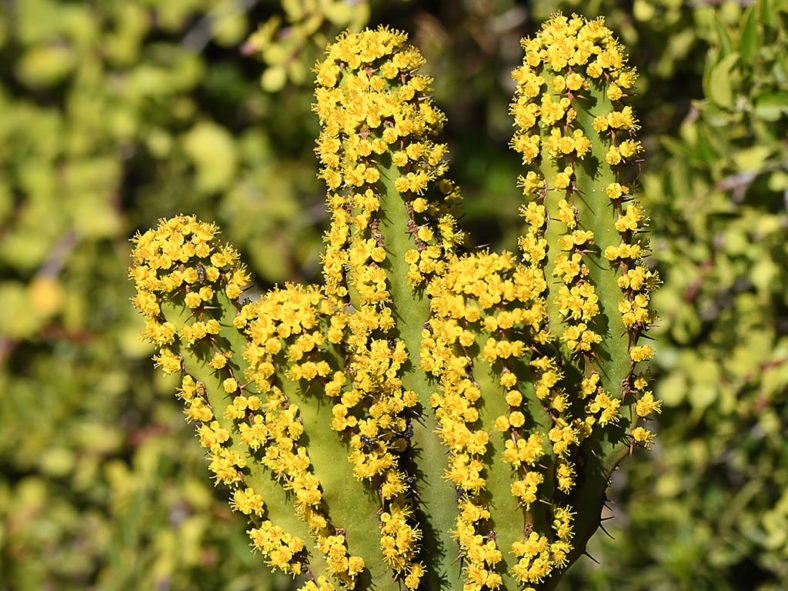Scientific Name
Euphorbia caerulescens Haw.
Common Name(s)
Blue Euphorbia, Blue Noors, Sweet Noors, Sweet Noor Succulent
Synonym(s)
Euphorbia coerulescens, Euphorbia ledienii, Euphorbia ledienii var. dregei, Euphorbia ledienii var. ledienii
Scientific Classification
Family: Euphorbiaceae
Subfamily: Euphorbioideae
Tribe: Euphorbieae
Subtribe: Euphorbiinae
Genus: Euphorbia
Etymology
The specific epithet "caerulescens (see-roo-LES-enz)" means "darkish green, blue; cerulean" and refers to the color of the stems.
Origin
Euphorbia caerulescens is native to South Africa. It grows on stony slopes and flats among arid scrub and larger bushes from Calitzdorp to Klipplaat and Jansenville.
Description
Euphorbia caerulescens, also known as Euphorbia coerulescens, is a succulent shrub with numerous erect stems with edges covered with paired, stiff spines and tiny, short-lived leaves. It can grow up to 5 feet (1.5 m) and spread by rhizomes. A mature plant can cover an area of more than 3.3 feet (1 m) in diameter. The stems are 4- to 6-angled, constricted at intervals, and can reach up to 2 inches (5 cm) in diameter. They are usually blue-grey but also green or yellowish-green. The lower part of the stems becomes pale grey and rough with age. The spines vary from white to dark brown and can grow 0.5 inches (1.2 cm) long.
The yellow cyathia are bisexual and appear at the tip of the stems in spring and summer. They can reach about 0.2 inches (0.5 cm) in diameter. The fruits are pink, 3-locular capsules.

How to Grow and Care for Euphorbia caerulescens
Light: This succulent is a sun lover. Place your indoor E. caerulescens in a sunny window. You may place the pot on the balcony or in the garden from spring to fall. Increase sun exposure gradually to prevent sunburn.
Soil: E. caerulescens requires well-drained soil. Use a commercial mixture formulated for succulents, or make your own potting mix.
Temperature: High summer temperatures are not a problem, but low winter temperatures can damage or kill your plant. E. caerulescens can withstand temperatures as low as 30 °F (-1.1 °C). USDA Plant Hardiness Zones 10a to 11b, 30 to 50 °F (-1.1 to 10 °C).
Watering: From spring to fall, water when the top inch (2.5 cm) of soil feels dry. Reduce watering in winter. Give it just enough water to prevent wilting. The best time of the day to water your E. caerulescens in the warm season is the evening.
Fertilizing: Plants in a pot need regular feeding. Apply a balanced fertilizer in a 10-10-10 NPK formulation, diluted to 1/4 strength weekly during the growing season.
Repotting: E. caerulescens will benefit from repotting, but it does not need to be repotted yearly. When your plant is outgrowing its pot, it is time to repot it in a larger pot and give it a fresh potting mix. The repotting is best done in early spring, at the beginning of the growing season. Wear gloves, protective clothing, and appropriate eye protection when repotting this succulent.
Propagation: The easiest and fastest method of propagation for this plant is by using cuttings. It can also be grown from seeds but can be difficult to germinate. The best time to take cuttings is in spring or summer. Sow the seeds in spring.
Learn more at How to Grow and Care for Euphorbia.
Toxicity of Euphorbia caerulescens
E. caerulescens produces a white milky sap that is toxic and can cause irritation to the skin and eyes. Therefore, keeping your plant away from children and pets is best.
Links
- Back to genus Euphorbia
- Succupedia: Browse succulents by Scientific Name, Common Name, Genus, Family, USDA Hardiness Zone, Origin, or cacti by Genus
Photo Gallery
Click on a photo to see a larger version.


